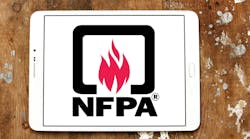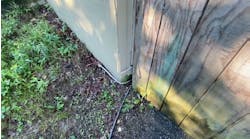The main body of NFPA 70E consists of three chapters spanning 48 pages. There are six pages between the front cover and the start of Chapter 1. Following the end of Chapter 3, NFPA has 50 pages of annexes. With more than half of the text in NFPA 70E devoted to these annexes, we can surmise the writers of this standard believe that material to be helpful and important.
Who are these writers? They serve on two committees:
- Correlating Committee on the National Electrical Code (NEC). This committee’s main job is to make sure these two standards don’t conflict.
- Technical Committee on Electrical Safety in the Workplace. This committee’s main job is review and update NFPA 70E during the current cycle.
As with the NEC Code Making Panels, NFPA 70 committee members come from diverse interests, such as unions, manufacturers of electrical equipment, manufacturers that use electrical equipment but manufacture something else (e.g., automobiles), consultants, training providers, service firms, and government agencies. With this many viewpoints, you can imagine how tough it can be sometimes to reach consensus on this or that point — and it means these annexes aren’t just somebody’s oddball idea of something nice to add.
There are nineteen of these annexes, starting with Annex A and ending with Annex S. Annex B is “reserved” so you could say there are eighteen annexes.
Annex A is a compendium of informative publications. It runs three full pages, and you might think at first blush that’s a nodding-off-kind-of-thing to look at. However, the list is organized by the organization that wrote (or has rights to) the publication:
A.2. NFPA publications.
A.3. Other publications
A.3.1. ANSI
A.3.2. ASTM
A.3.3. ICRP
A.3.4. IEC
A.3.5. IEEE
A.3.6. ISEA
A3.7. ISO
A.3.8. NIOSH
A.3.9. UL
A.3.10. U.S. Government publications.
After that is A.3.11, which presents a list of six publications by independent authors and two technical papers (each presented at a different IEEE conference).
This resource is worth spending the time to peruse. You may find something that will provide information of importance to safety in your work. For example, if your company uses rubber insulating gloves, blankets, or covers, you will probably want to obtain the three ASTM standards that cover the use of these.
Since there’s nothing to cover in Annex B, Part 2 of this series will cover Annex C.




